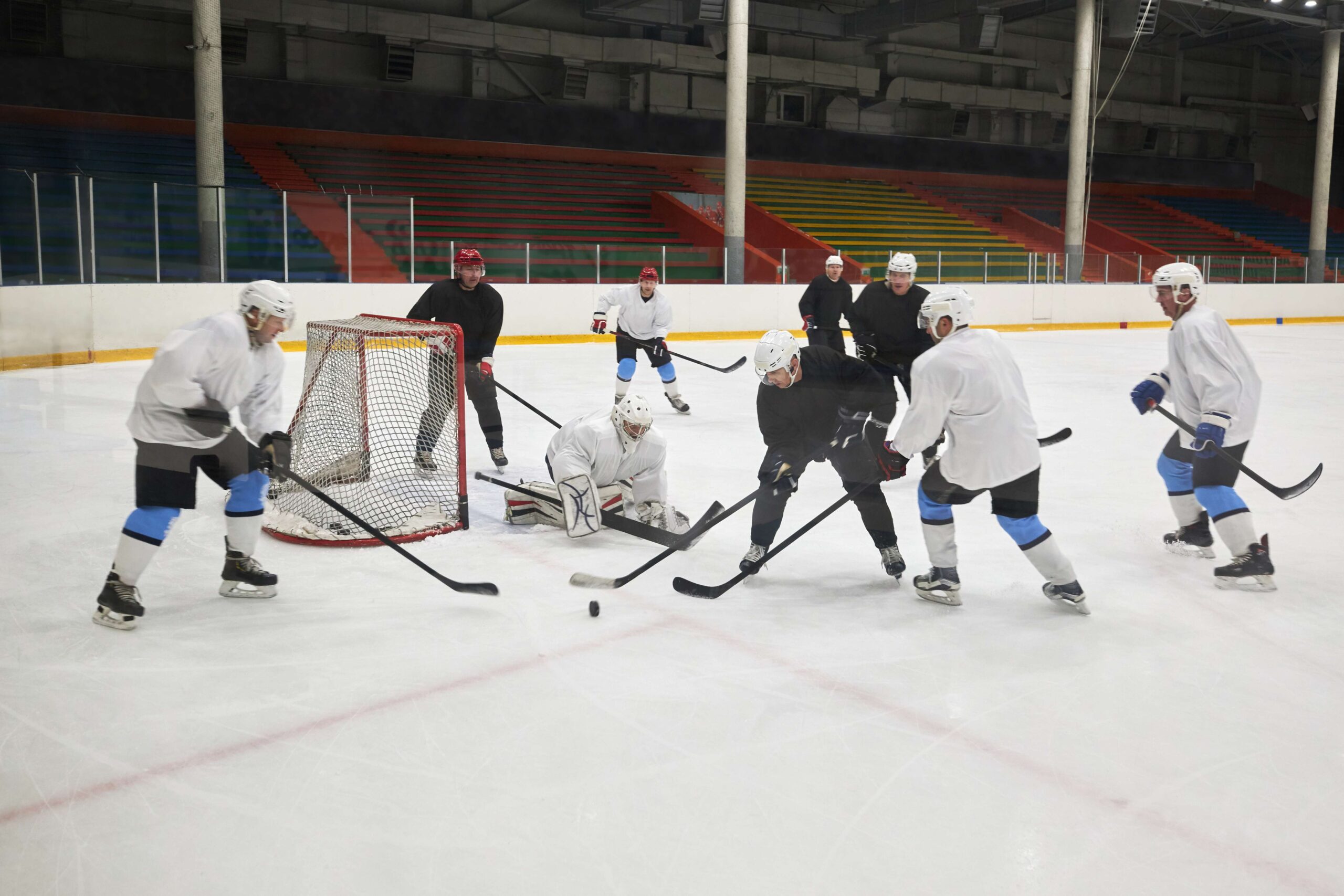A period in ice hockey lasts for 20 minutes. There are three periods in a standard game.
Ice hockey, known for its fast-paced action and physical play, divides the game into three equal segments, making the total regulation playtime 60 minutes. These intervals are critical for strategy and rest, as teams regroup and plan their approach to the next phase of the game.
The clock stops for various reasons, such as penalties and puck out of play, ensuring that the actual duration of a game extends beyond one hour. Between each period, there is an intermission, typically lasting 15 to 18 minutes, which allows the ice to be resurfaced and players to recuperate. Understanding the structure of ice hockey periods is essential for both players and fans to appreciate the flow and tactics of the sport.
Ice Hockey Basics
An ice hockey game has three periods. Each period lasts 20 minutes. A clock keeps track of the time. The clock stops for breaks in play. This includes penalties and goals.
Teams get a 15-minute intermission between periods. These breaks allow players to rest. Coaches also plan new strategies during this time.
Overtime happens if the game is tied. It is a five-minute period. But, in the playoffs, overtime is 20 minutes. The game ends when one team scores.

Duration Of A Period
The standard time for a period in ice hockey is 20 minutes. This duration is consistent across the NHL (National Hockey League) and most professional levels. However, this time can differ in junior leagues and amateur competitions. These variations cater to player development and scheduling needs.
In some youth leagues, periods may be shorter, commonly 15 or 12 minutes. This allows younger players to maintain high energy levels throughout the game. Recreational leagues might also adjust period lengths to fit available ice time. Such adjustments ensure that players enjoy the game without excessive fatigue.
Intermissions And Breaks
Intermissions in ice hockey are essential for both players and fans. Each game includes three 20-minute periods. Between these periods, a 15 to 18-minute intermission occurs. These breaks allow players to rest and strategize. Coaches often discuss tactics with their teams during this time.
Intermissions also provide fans time to refresh and socialize. Many use this break to grab snacks or merchandise. Arena staff use the time to clean and maintain the ice. This ensures the playing surface is safe and optimal for performance. Thus, intermissions serve multiple important purposes in ice hockey.
Overtime And Sudden Death
Overtime in ice hockey lasts for five minutes in the regular season. This period is played with three skaters per team, unlike the standard five. If the game remains tied after overtime, it progresses to a shootout.
The sudden death rule applies during playoffs. The first team to score during overtime wins the game instantly. These overtime periods are twenty minutes long, following a brief intermission.
Stoppage Time
Stoppage time in ice hockey can vary. It depends on many things. Games can pause for different reasons. Pucks shot out of play cause a stop. So do broken sticks and equipment issues. Goals and penalties also lead to stoppages. Referees might need to check game events.
Adding time for these stoppages is not simple. Officials use a complex system. They track each stop. They do this to keep the game fair. The timekeeper plays a key role. They ensure the clock matches the play time. This keeps the game length accurate.
Timekeeping And Roles
The official timekeeper has a crucial role in ice hockey. This person manages the game clock. They track the length of periods and intermissions. Ice hockey has three periods. Each period is 20 minutes long. The timekeeper also records stoppages and signals the end of a period.
The referee assists in timekeeping. The referee ensures the game flows smoothly. They can stop play for various reasons. These include penalties and puck out of play. When play stops, the referee informs the timekeeper. The referee helps to keep the game fair and on schedule.
Period Timing In Major Tournaments
NHL games are split into three 20-minute periods, totaling 60 minutes. Between each period, there is a 17-minute intermission. This break allows teams to rest and strategize.
Olympics and international ice hockey matches also consist of three 20-minute periods. The main difference is the intermission time, which lasts 15 minutes. This shorter break speeds up the game flow.
Frequently Asked Questions
How Many Minutes Are In An Ice Hockey Period?
An ice hockey period typically lasts for 20 minutes, with three periods in a standard game.
How Long Does A Period Last In The NHL?
An NHL period lasts 20 minutes, with three periods in a standard game. Overtime and intermissions are additional.
Why Does NHL Have Three Periods?
The NHL has three periods to break the game into manageable segments. This structure maintains high energy play and allows players to rest, keeping the game fast-paced and exciting for fans.
How Many Quarters Are In Ice Hockey?
Ice hockey consists of three periods, not quarters. Each period is typically 20 minutes long in professional leagues.
Conclusion
Understanding the duration of a period in ice hockey is crucial for fans and players alike. Each period lasts 20 minutes, split into three segments per game. This setup impacts strategy and pacing. Keep this in mind whether you’re watching a game or planning your training sessions.
Enjoy the fast-paced action that ice hockey offers!


